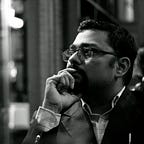The Digital Renaissance: How Technology Fuels Creativity in the Modern Age
In our rapidly evolving digital age, there is a palpable excitement in the air, akin to that of the European Renaissance. The latter, a period spanning the 14th to the 17th century, was characterized by unprecedented advancements in art, science, and culture. Today, we are witnessing a ‘Digital Renaissance,’ where technology acts as the catalyst for creativity and innovation.
Historically, the printing press, invented by Johannes Gutenberg in the 15th century, democratized access to knowledge. It fueled the spread of ideas and birthed a new era of literacy. Similarly, the internet has revolutionized how we share and consume information. Just as the printing press made books accessible to the masses, the internet has made knowledge ubiquitous.
But how exactly does technology enhance creativity today?
1. Boundless Inspiration: In the Renaissance, artists traveled great distances to study and draw inspiration from established masters. Today, the internet brings the world to our fingertips. Platforms like Pinterest, Instagram, and Behance showcase global talents, giving modern creators a vast pool of inspiration to dive into.
2. Collaboration Beyond Borders: Think of the Medici family, the patrons who supported several Renaissance artists. Now, platforms like Kickstarter and Patreon enable artists to find patrons globally. Collaboration tools like Slack or Trello allow people from different parts of the world to work together seamlessly, merging diverse perspectives to create something truly unique.
3. Digital Art Forms: The Renaissance saw the evolution of techniques like chiaroscuro and linear perspective. Today’s digital tools like Procreate, Adobe Creative Suite, and VR platforms offer artists limitless avenues to explore and express their creativity.
4. Democratizing Learning: Earlier, apprenticeships under maestros were coveted. Now, platforms like Skillshare, Udemy, and MasterClass provide everyone with the opportunity to learn from global experts.
5. Augmented Reality (AR) and Virtual Reality (VR): These technologies immerse users in an experience. Museums and artists use AR/VR for interactive exhibits, making art and history come alive in ways previously imagined only in science fiction.
While the parallels between the European Renaissance and today’s Digital Renaissance are numerous, it’s crucial to address the challenges too. The internet, while democratizing, also brings information overload. The challenge lies in discerning quality content amidst the noise. Moreover, the digital divide remains a pressing concern. Ensuring equitable access to technology is paramount to ensure that this renaissance benefits all.
As we stand on the precipice of this Digital Renaissance, it’s essential to approach it with a sense of responsibility. Just as the European Renaissance shaped the modern world, this era will shape the future. By harnessing technology judiciously and fostering creativity, we can hope for a future that mirrors the brilliance and depth of the periods of great awakening in human history.
